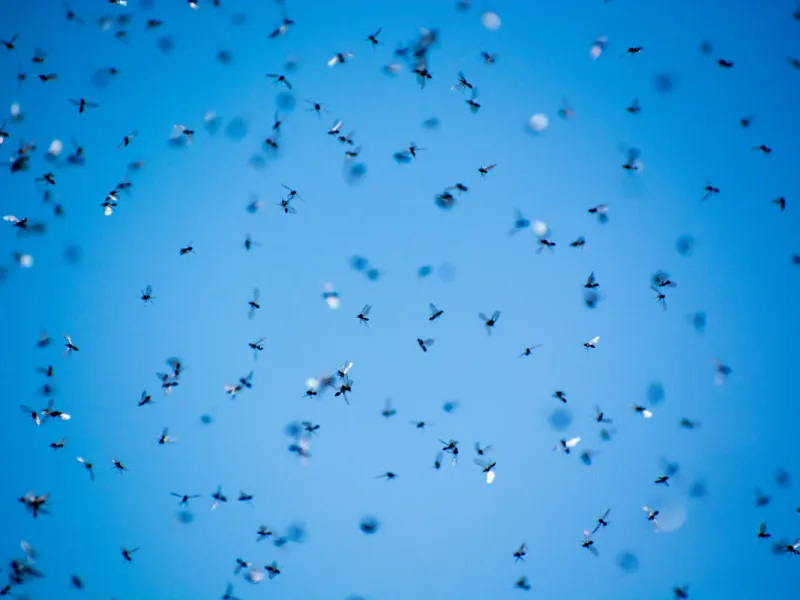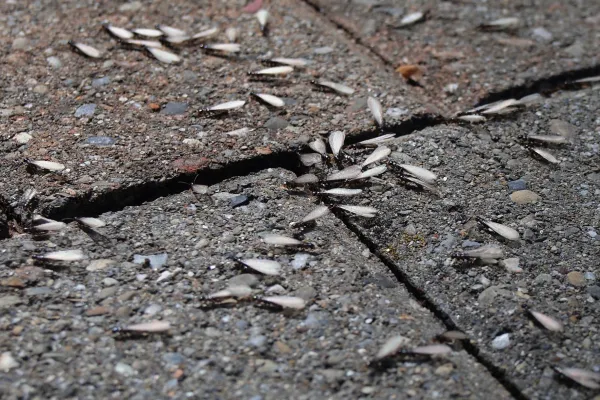Taking Action against Termite Swarmers

You step out your front door and take a deep breath. There, a short distance away – are those flying ants you see? Gnats? No, it’s much worse. Those are termites. Maybe even formosan termite swarmers.

Termite Swarming
Although swarming does not necessarily indicate that you are sheltering (or feeding) termites in your home, it is a sign that you have termites nearby and could have a problem on your hands. Formosan termites, nicknamed the super-termite, can have colonies that produce upwards of 70,000 swarmers. Imagining a cloud like that flying towards your very edible home is not a pretty picture. That said, termite swarmers themselves do not actually possess biting or chewing mandibles. Their purpose is to create new termite colonies around the area, which will then turn into an issue for nearby homeowners.
Termites swarm in warm temperatures, usually after a heavy rain. Eastern Subterranean Termites have their swarming season from late March to April, and Formosans swarm in late May through June. The latter are the most aggressive type of termite that we have in the Lowcountry, so it is important to take termite protection action when you see them.
What to do when you see them
If you see termite swarmers inside or around your home, it is best to call professional termite exterminators as soon as possible. Do not panic – remember, they have no plans of eating your home – yet. Nonetheless, it is important to get a trained and licensed exterminator to the premises as soon as possible to find the source of the termite swarmers.
More than 95% of the termite swarmers that Palmetto Exterminators finds inside of homes are not coming from the house itself. Termite swarmers are a reality of the Lowcountry though, and monitoring for potential infestations is part of being a responsible homeowner (Pro Tip: termite damage is usually not covered by homeowner’s insurance). Keep your home safe from this preventable damage by getting regular inspections and termite treatments when necessary.
For more information on termite control and termite protection, sign up for a free inspection or contact us.


